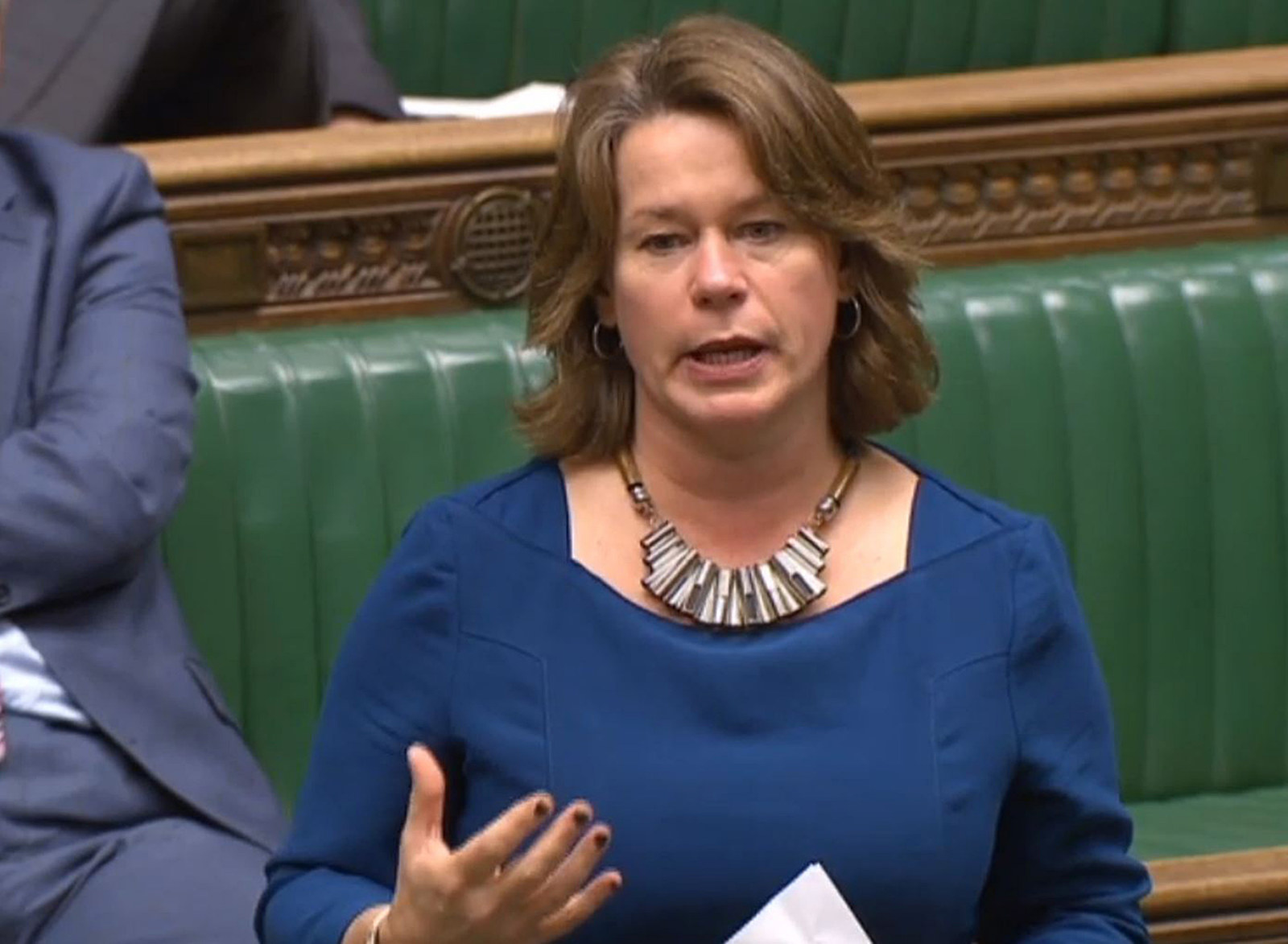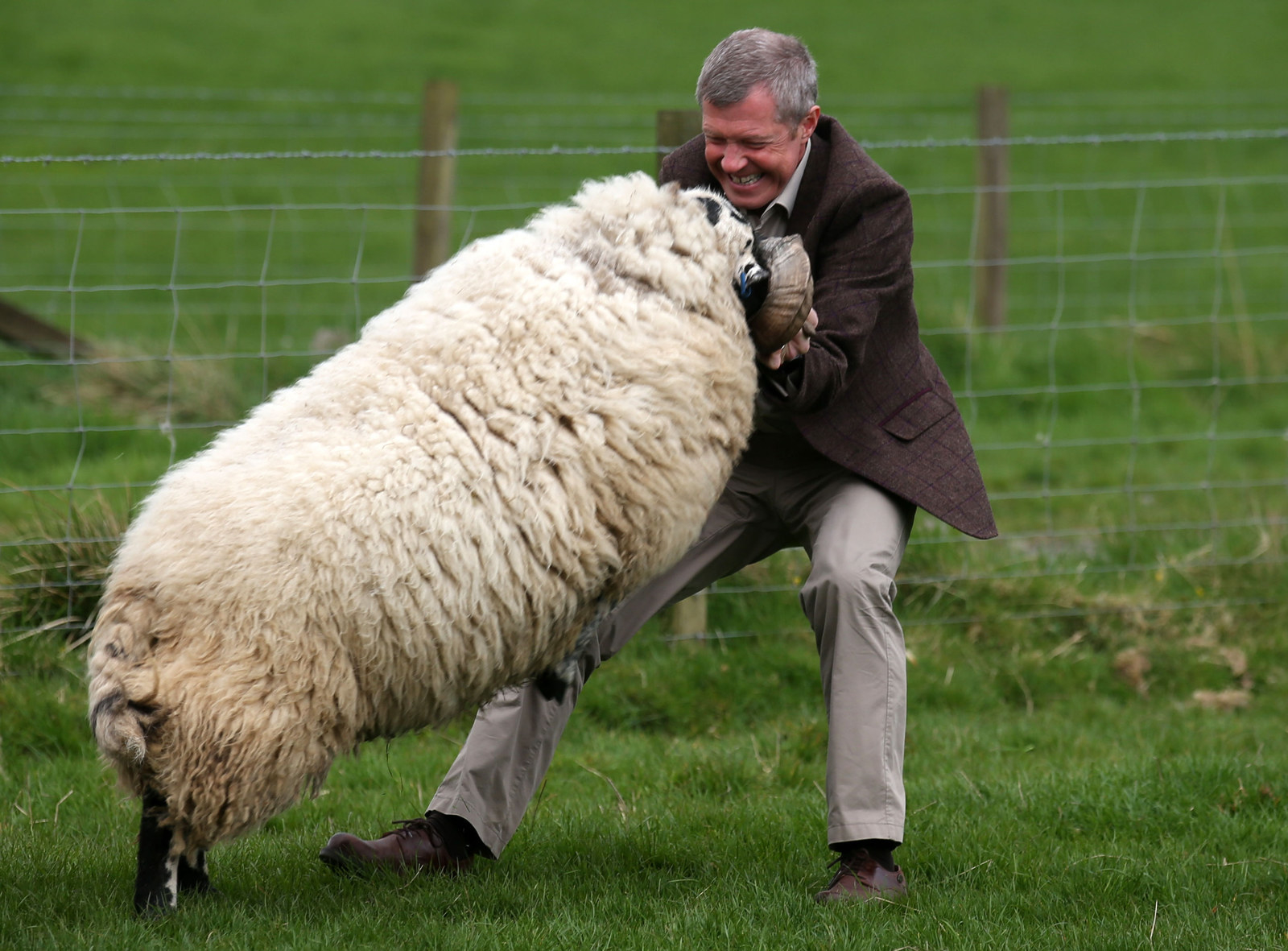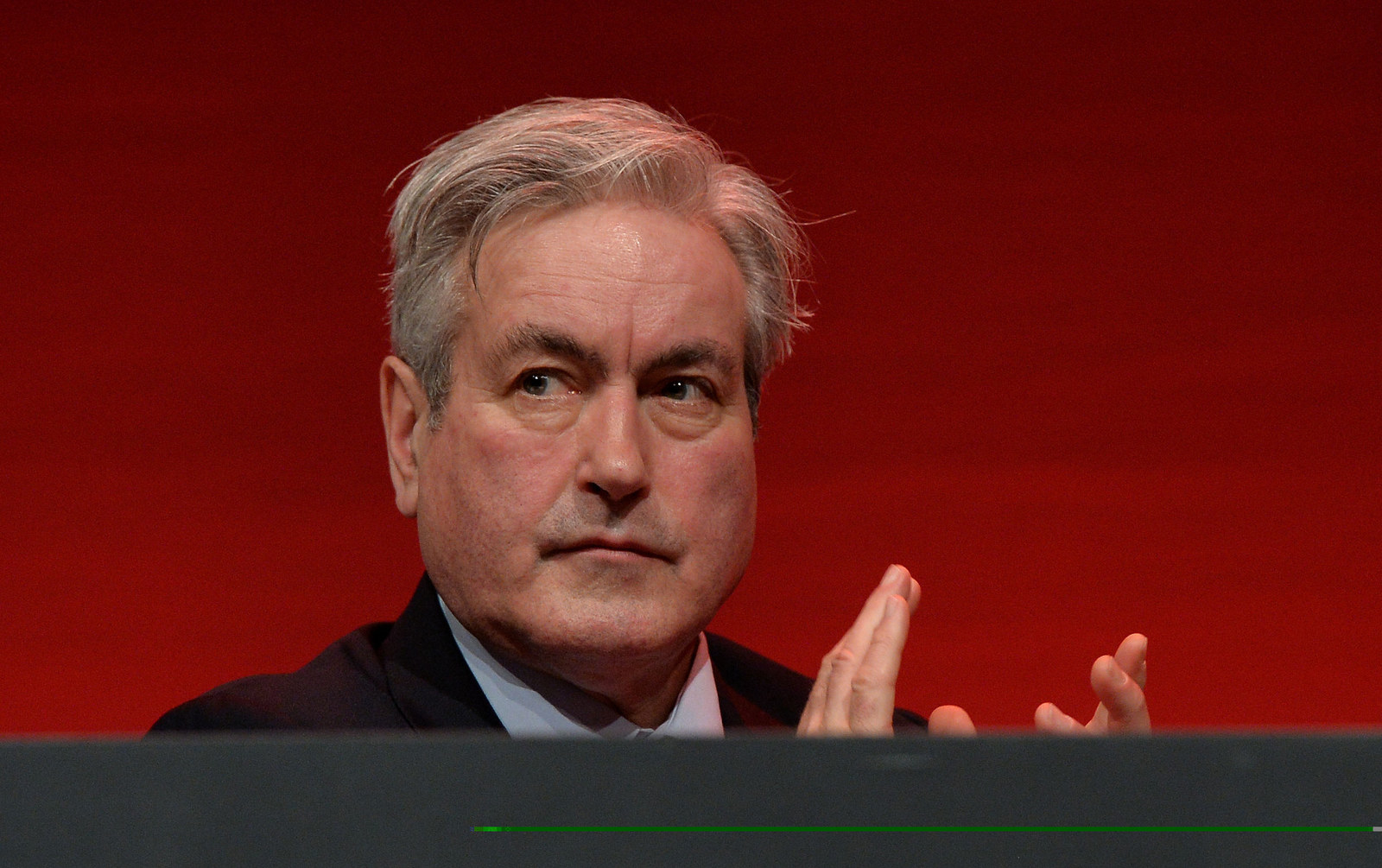
There are 14 seats that the opposition parties in Scotland think they could win from the SNP in June's general election, party insiders have told BuzzFeed News.
In 2015's election, the SNP won 56 out of a possible 59 seats in Scotland with each of the other three main parties taking one each. As a result of Brexit and the prospect of another Scottish independence referendum, the other parties are adamant that will represent a high-water mark for the SNP.
The Conservatives have marked two seats in the borders of Scotland and one in the northeast where they think they can gain from the SNP, and a further four where they think they stand an outside chance.
The Lib Dems believe there are three seats they could win and a further three that they will pour resources into in the hope they can cause a big upset with their clear pro-EU and pro-UK stance.
1. Dumfries and Galloway

The Conservatives believe they will take all three border seats, including the return of Scotland's only Tory MP, David Mundell. The Borders are broadly more anti-independence than Scotland's central belt, but the Tories would have to overturn a 6,000 majority from incumbent SNP MP Richard Arkless to win Dumfries and Galloway.
However, the area had a high Leave vote in last year's EU referendum compared with the rest of Scotland, with 46.9% of locals opting to leave the EU, which favours the Conservatives. Dumfries and Galloway also voted 65% to stay in the UK in 2014's Scottish referendum, and in last year's Scottish elections both the constituencies that make up the area returned Conservative MSPs.
Chance of an SNP loss: High
2. Berwickshire, Roxburgh, and Selkirk

Like Dumfries and Galloway, the Border constituency of Berwickshire, Roxburgh, and Selkirk is prime territory for a Conservative gain from the incumbent SNP MP Calum Kerr. Only 300 votes separated him and his Conservative opponent in 2015, John Lamont, who will run again despite becoming an MSP in 2016.
It's part of the Scottish Borders area, which voted 41.5% for leaving the EU last year, and in 2014's Scottish referendum it voted 66.6% against independence. In the 2016 Scottish election, it was a Conservative hold with Lamont securing over 55% of the vote.
Chance of an SNP loss: High
3. Banff and Buchan

SNP MP Eilidh Whiteford secured a huge win in 2015 with 60.2%, but the Scottish Conservatives believe that the vote to leave the EU will deliver a big swing in their favour in June.
The constituency includes several fishing communities, which are largely anti-EU, and the area that contains the constituency, Aberdeenshire, voted 45% to leave the EU in last year's referendum. It delivered a 60% vote to stay in the UK in 2014, and, although it returned an SNP MSP in 2016, the party's vote share crumbled by over 12% while the Conservative candidate's increased by 13%.
Chances of an SNP loss: Medium
4. Moray

Moray's MP is the deputy leader of the SNP, Angus Robertson, who has represented the area since the election in 2001. In 2015, he increased his vote share to 49.5% and has a huge majority of 9,000.
However, he now represents the most anti-EU part of Scotland and the Conservatives think they have an outside chance of causing a huge upset. Insiders have said they will be piling resources into the seat, and it will be contested by the incumbent Conservative MSP, Douglas Ross.
The area came within a sliver of voting Leave with 49.9% of locals backing an EU exit. Moreover, 59.5% voted to stay in the UK in 2014, and, like in Banff and Buchan, the successful SNP MSP saw his vote share decline by 11.7% in the Scottish election.
Chances of an SNP loss: Low
5. West Aberdeenshire and Kincardine

The SNP's successful candidate in 2015, Stuart Donaldson, got 41.6% of the vote and enjoys a big majority of around 7,000 over his Conservative rival. However, like in other north east seats, the Conservatives believe the Brexit vote has boosted their chances in the area.
The areas which make up the constituency both voted around 45% to leave the EU, which is relatively high in Scotland, and between 56% and 60% to remain in the UK in 2014. The Scottish constituency of Aberdeenshire West, which forms a part of the UK constituency, was a Tory gain from the SNP in 2016.
Chances of an SNP loss: Medium
6. East Renfrewshire

East Renfrewshire, south of Glasgow, does not seem like a typical Conservative target seat. The party came third in the election in 2015, behind incumbent SNP MP Kirsten Oswald and then-Scottish Labour leader Jim Murphy, and only 1 in 4 voters opted to leave the EU last year.
However, it was strongly pro-union in 2014, with a Yes vote of just 36.8%, and it produced one of the shock results of the 2016 election when its corresponding Scottish parliament constituency, Eastwood, returned a Conservative gain from Labour. The Tories hope to pull off a similar shock in June.
Chances of an SNP loss: Medium
7. Perth and North Perthshire

SNP MP Pete Wishart has held the Perth and North Perthshire seat since it was created in 2005 and has increased his majority at each election, returning over 50% of the vote in 2015 with a majority of 10,000. In the 2017 election, he'll be facing well-known Scottish Conservative MEP Ian Duncan.
The Perth and Kinross area produced a low Brexit vote of 38.9% but was strongly anti-independence, with 60% voting No in 2014. Perthshire North returned deputy first minister John Swinney to Holyrood in 2016, but his vote share dropped by over 12% while the Tory vote share increased by the same amount.
The Conservatives also believe Wishart's often controversial tweets, such as when he called No voters "nawbags", will play into their hands in terms of motivating the pro-UK vote to go to the polling booths.
Chances of an SNP loss: Low
8. East Dunbartonshire

The first notable attempt at a political comeback in Scotland came from the Lib Dems, who announced former government minister Jo Swinson would be re-contesting her old seat of East Dunbartonshire against SNP MP John Nicolson. Swinson lost the seat by just 2,000 votes in 2015 after a 30% increase in the vote share of the SNP.
The seat produced a very low Leave vote of 28.6% but it's unclear who that will favour out of the Lib Dems and SNP, both of which are pro-EU. The seat did, however, vote 61.2% to stay in the UK. In 2016, the constituency – which is split into two constituencies in Scottish elections – returned two SNP MSPs with substantial majorities.
The SNP hope the pro-UK vote in the area will be split between the Lib Dems, Labour, and the Conservatives to prevent Swinson's return to Westminster.
Chances of an SNP loss: Medium
9. Edinburgh West

The Edinburgh West constituency has been fraught with controversy since then-SNP MP Michelle Thomson's victory in 2015. Thomson had the SNP whip removed from her after police began an investigation into some property deals from her former business partner.
Thomson has never been proven guilty of any wrongdoing but the Lib Dems believe the SNP's reputation has been damaged in the area as a result of the surrounding controversy and the way the party dealt with the issue.
It is yet unclear whether Thomson will be able to stand for the SNP, or if she'll do so as an independent. If she is an independent, the Lib Dems believe the SNP will encounter difficulties because of the dual campaigns.
Edinburgh voted 75% Remain in the EU referendum, and 61% against independence in 2014. Crucially, the Lib Dems won a shock gain from the SNP in the Edinburgh West constituency in the Scottish election last year, and the winning MSP, Alex Cole-Hamilton, will be the campaign director for the general election.
Chances of an SNP loss: High
10. North East Fife

North East Fife was a Lib Dem stronghold for decades until the SNP's victory in 2015, which returned Stephen Gethins, the party's Europe spokesperson in Westminster, to the UK parliament with a majority of 4,000.
Fife as a whole registered a 41.4% Leave vote in 2016 and a 55% No vote in 2014 so is not being considered fertile ground by the Lib Dems on those issues alone. However, Scottish Lib Dem leader Willie Rennie ran a strong local campaign for the Scottish election in 2016 and gained the seat from the SNP by over 3,000 votes.
The party is confident it can replicate 2016's success in June.
Chances of an SNP loss: High
11. Ross, Skye, and Lochaber

The former seat of late Lib Dem MP Charles Kennedy, Ross, Skye, and Lochaber was traditionally seen as a party stronghold but Kennedy was swept aside in the 2015 election in what he referred to as "the night of the long sgian dubhs".
The SNP MP Ian Blackford will be protecting a majority of around 5,000 against the second-place Lib Dems, but the party believe the outpouring of grief for Kennedy after his death led many to question whether they made the right decision in 2015.
The Highland area voted 44% for Leave in the EU referendum, and only 52% against independence in 2014, so the Lib Dems will struggle to win the seat on constitutional matters alone.
The area was also a healthy hold for the SNP in 2016, when the local MSP Kate Forbes increased the SNP's vote share while the Lib Dems fell by nearly 8%.
Chances of an SNP loss: Low
12. Gordon

The Gordon constituency was won in 2015 by the SNP's most well-known MP and Scotland's former first minister, Alex Salmond. He took the seat with nearly 48% of the vote despite the fact it was held by the Lib Dems since the 1990s.
The Lib Dems accept it's unlikely they'll be able to defeat such a big-name MP in this general election, but they're not ruling it out entirely. Aberdeenshire delivered a 45% vote to leave the EU and many fishing communities dislike the SNP's plan to return an independent Scotland to the EU.
It was also 60% against independence in 2014, and, surprisingly, part of the constituency is in the Holyrood constituency of Aberdeenshire West, which returned a Conservative gain from the SNP in 2016's election – so it's unclear where allegiances really lie.
Chances of an SNP loss: Low
13. Caithness, Sutherland, and Ross

Caithness, Sutherland, and Ross in the Highlands is another seat that was Lib Dem for a long time until the SNP's major victory in 2015. Dr Paul Monaghan MP unseated John Thurso with a majority of nearly 4,000 in the last election.
However, Monaghan has been one of the most controversial MPs of the 2015 SNP group. He has referred to the union flag as a "butcher's apron" and compared the Westminster government to the Third Reich.
The Lib Dems hope the controversy surrounding the SNP MP, alongside its tradition in the area, will give them a chance of a gain. It voted 44% for Brexit as part of the Highland area, 47% for independence, and returned an SNP MSP in 2016.
However, the Lib Dems increased their vote share by 8.8% in the Holyrood election, while the SNP's decreased by 5.1%.
Chances of an SNP loss: Medium
14. East Lothian

Scottish Labour will be focussing a lot of its efforts on keeping its only MP – Ian Murray in Edinburgh South. However, the party believes its best chance for a gain is in East Lothian where SNP MP George Kerevan won with a nearly 7,000 majority in 2015.
The area had a 65% Remain vote in June and a 62% No vote in 2014, but importantly Labour managed to hold onto the corresponding seat in the Scottish election last year. Former party leader Iain Gray's vote held up despite the party's vote going down across the country.
The party plans to replicate its successful Edinburgh South campaign from 2015 by making it strongly local, rather than depending on constitutional issues.
Chances of an SNP loss: Low

